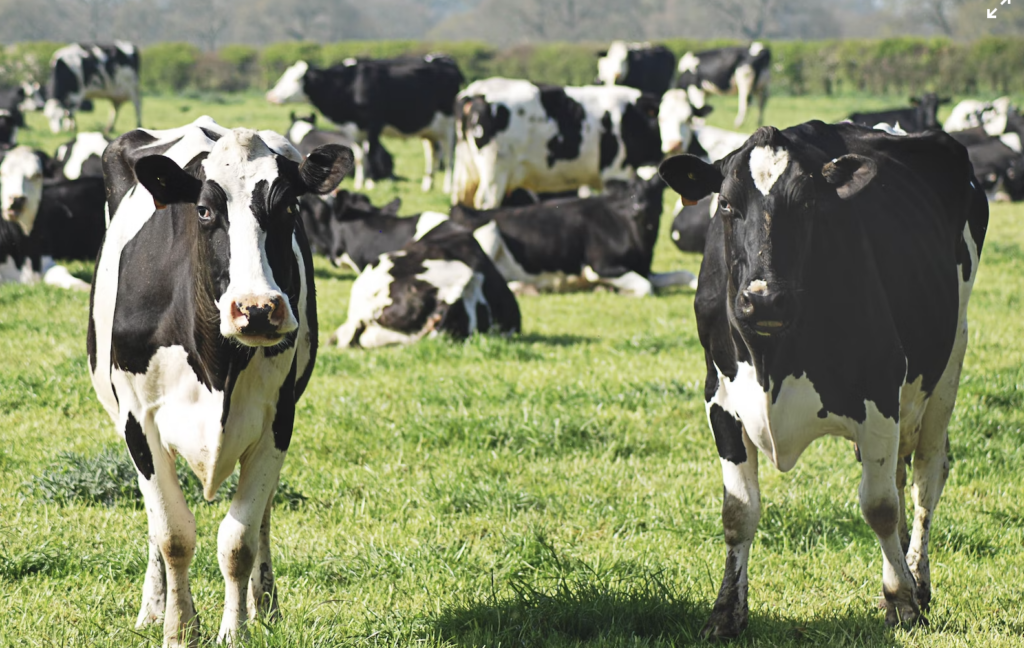Cows Are Giving People A Dangerous New Flu
Scientists are alarmed because they have discovered a new type of flu, unlike any previously found strain, that has already made the jump from infecting a massive number of cows to being detected in humans.
This article is more than 2 years old

Communicable viruses are at the top of most of our minds, with all of us having the recent experience of living through the Covid-19 pandemic. We have seen firsthand how devastating a virus that spreads quickly and can produce fatal symptoms in humans can shut the entire world down for a lengthy time. Scientists are alarmed because they have discovered a new type of flu that is unlike any previously found strain of influenza. This flu has already made the jump from infecting a massive number of cows to being detected in humans.
The discovery of the flu, Influenza-D, can be traced back to a farmer in Oklahoma in 2011. The farmer noticed that many of his pigs appeared sick with flu-like symptoms. The farmer took some swab samples from the pigs and sent them off to Newport Laboratories, which takes such samples, grows the virus in their lab, kills them, and then develops custom vaccines for farmers to treat their livestock.
Just uttering a statement that a new pathogen could spread through the human population again is a terrifying thought for each one of us. When Newport Laboratories virologist Benjamin Hause started that process, he discovered something that he had never seen before. According to NPR, Hause commented on his thoughts when he made the discovery, “I thought, what is this thing? We’ve never seen anything like this before. Right away, we were concerned that this virus could infect people.”
The standard thought process of scientists is that it is an extremely rare occurrence for viruses to spill over from the animal population to the human population. However, in recent years that line of thinking has been proven incorrect. In the United States, when a patient goes to their doctor with flu symptoms, the doctors can identify the pathogen causing the symptoms only 40 percent of the time.
Researchers started looking into Hause’s new Influenza-D to see how widespread it might already be, and their discovery is shocking. In six out of every ten cases of human flu symptoms, the doctor treating the patient doesn’t know what specific virus is causing the symptoms. Scientists are now postulating that these unknown viruses may be spilled over from animals like the dog coronavirus, which can be found in humans everywhere on the planet from Malaysia to Arkansas.
The virus was found everywhere they looked; sheep, pigs, goats, camels, and horses, but most prevalently in cows. NPR quoted Feng Li, a University of Kentucky virologist, “The percentage of cows in the U.S. that have antibodies to influenza-D is way, way high,” he says. “From California to Vermont, and North Dakota to Texas, cows are infected with this virus. They are the primary reservoir for the virus.”
In 2019 and 2020, scientists at Boston University ran an experiment and went out to five dairy farms, and they swabbed 31 workers’ noses before and after their shifts for five days to see if there were any traces of the virus. They found a large amount of the Influenza-D virus in their nasal cavities. When dairy workers in Florida had their blood tested for antibodies of Influenza-D, they found high concentrations of the antibody amongst these workers, which means their bodies had been infected at one point, and the body fought them off.
When studying the greater population, it was discovered that 18 percent of people tested had the antibody present. Researchers are still unsure if this flu produces any symptoms in humans. But like all viruses, since they mutate rapidly for their survival, and if it currently is not producing harmful human symptoms does not mean that it could mutate into a more harmful version of itself, which could be catastrophic for human existence.




